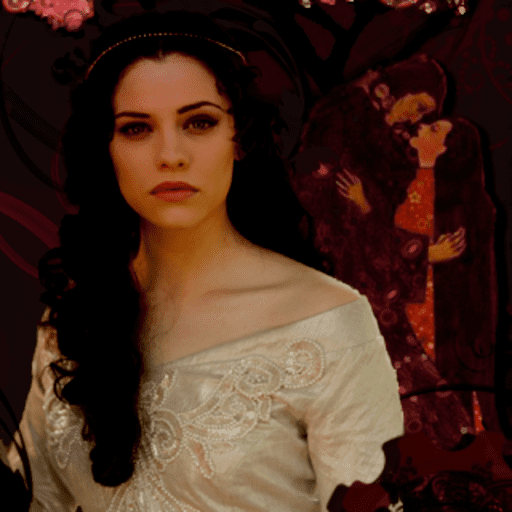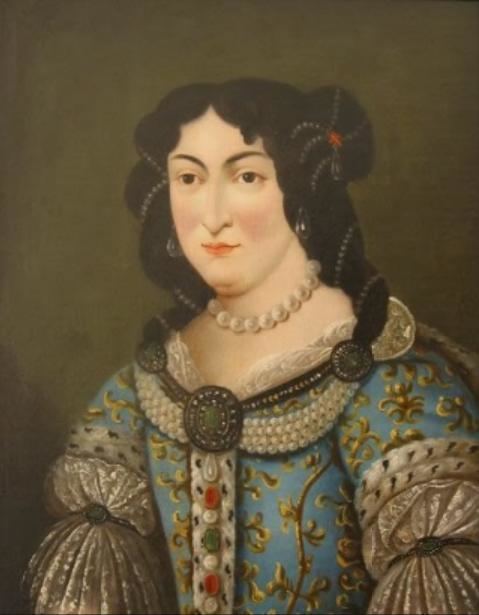Tenure 1476(–1477) Died 1497 House House of Szilágyi | Family Szilágyi Name Jusztina Szilágyi | |
 Representation of Jusztina Szilágyi | ||
Great grandchildren Peter the Lame, Alexander II Mircea Children Mihnea cel Rău, Vlad Călugărul Similar Vlad the Impaler, Mihnea cel Rău, Vlad Călugărul, Michael Szilágyi, Vlad II Dracul | ||
Jusztina Szilágyi de Horogszeg, also mentioned as Ilona Szilágyi (before 1455 – 1497), was a Hungarian noblewoman, the second wife of Vlad the Impaler, Voivode of Wallachia. She was the daughter of Ladislaus or Osvát Szilágyi, thus a cousin of Matthias Corvinus, King of Hungary. Corvinus gave her in marriage to Wenceslas Pongrác of Szentmiklós. Pongrác's inherited estates were located in Upper Hungary (present-day Slovakia), but he was forced to renounce them in exchange for landed property that he and Jusztina jointly received in Transylvania. Pongrác died in 1474. The widowed Jusztina became the wife of Vlad the Impaler, whom Corvinus acknowledged as the lawful voivode of Wallachia in 1475. Vlad seized Wallachia in late 1476, but was soon murdered. To strengthen her claim to her Transylvanian estates, she married Paul Suki, who was related to the former owners of the same lands. Suki died in 1479. Two years later, Jusztina married John Erdélyi of Somkerék, who survived her.
Contents
Early life

Most details of Jusztina's early life are uncertain. According to a royal charter (which was issued in 1479), she was the daughter of Osvát Szilágyi, who was the maternal uncle of Matthias Corvinus, King of Hungary. An other document (which was written in 1496) stated that she was the daughter of Osvát's younger brother, Ladislaus. Historians András Kubinyi and Tamás Fedeles say, Jusztina was probably the daughter of Osvát and his wife, Ágota Pósa of Szer. Pál Engel and Mihai-Florin Hasan write, Ladislaus and his unknown wife were her parents. Radu Florescu (who calls her Ilona) says, she was the daughter of Michael Szilágyi (a brother of Osvát and Ladislaus).
She was born in the early 1450s, according to Hasan. Hasan also proposes that she was still an infant when her father died in 1454. Her uncle, Osvát, became her guardian, which gave rise to the confusion of her fathers.
First marriage
Her cousin, Matthias Corvinus, gave her into marriage to Wenceslas (also known as Ladislaus) Pongrác of Szentmiklós. He was the member of an influential noble family which owned estates in Upper Hungary (now Slovakia). Corvinus forced Pongrác to renounce the fortress of Sztrecsény (now Strečno in Slovakia) and the town of Zsolna (present-day Žilina in Slovakia), in exchange for Transylvanian estates, including Gernyeszeg (now Gornești in Romania), which had been confiscated from the Suki and Erdélyi of Somkerék families in 1467. While Pongrác was the sole owner of the estates in Upper Hungary, the new estates in Transylvania were jointly owned by Pongrác and Jusztina. Pongrác died in 1474, but Jusztina was almost always mentioned as his widow during the following years until her death.
Second marriage
Matthias Corvinus had Vlad the Impaler, Voivode of Wallachia, imprisoned for Vlad's alleged secret negotiations with the Ottoman Empire in 1462. Vlad was released only in early 1475. Fyodor Kuritsyn, who was the ambassador of Ivan III of Russia to Corvinus in the early 1480s, recorded that Corvinus had gave his "sister" in marriage to Vlad and they lived together for ten years. Kuritsyn obviously combined data about Vlad's two wives when writing his report, according to Hasan.
Vlad's (unknown) first wife had already died in 1472 or 1473, and Corvinus's cousin, Jusztina became his second wife after his release. Vlad had to convert to Catholicism before his marriage. Corvinus acknowledged him as the lawful ruler of Wallachia before 25 June 1475, but he did not support Vlad to asser his claim against Basarab Laiotă. Hasan proposes that Vlad most probably bought a house in Pécs, which would be known as "Drakwlyaháza" ("Dracula's house"), around that time. The house was mentioned in a deed issued by the Pécs Chapter on 10 September 1489, which also referred to "Jusztina, the widow of the late voivode Dragwlya".
Vlad the Impaler broke into Wallachia with Hungarian and Moldavian support, and was installed as voivode in November 1476. He asked the burghers of Brașov to send carpenters to Târgoviște where he wanted to build his new home. However, Vlad was murdered in late 1476 or early 1477. Kuritsyn recorded that Vlad had three sons. According to Hasan, Jusztina gave birth to Vlad's second son and namesake, who was the ancestor of the Hungarian noble Drakwla Family, but Fedeles says that the marriage of Vlad and Jusztina was childless.
Third and fourth marriages
The members of the Erdélyi of Somkerék family litigated Jusztina for the castle of Gernyeszeg and the villages attached to it in 1478. Jusztina married Paul Suki (who was a nephew of the one-time co-owner of the estate) before 26 January 1479. Suki died in the same year, which gave rise to disputes between Jusztina and his relatives. About two years later, Jusztina married John Erdélyi of Somkerék. He survived Jusztina, who died after 13 June 1497.
